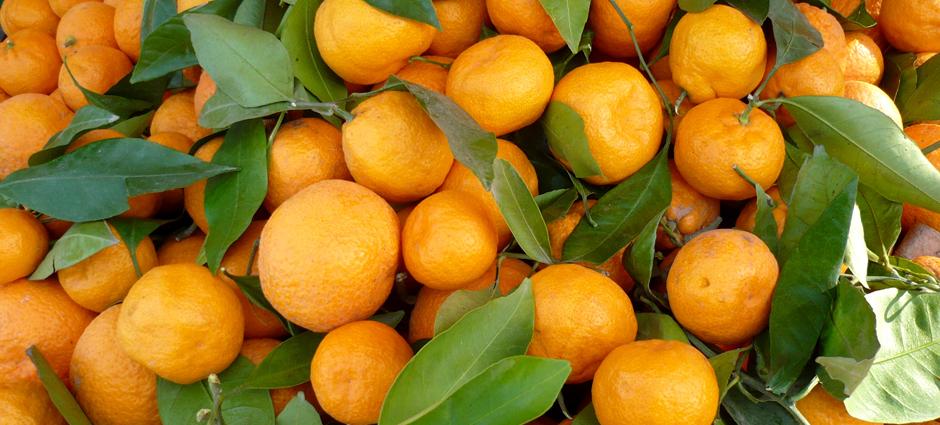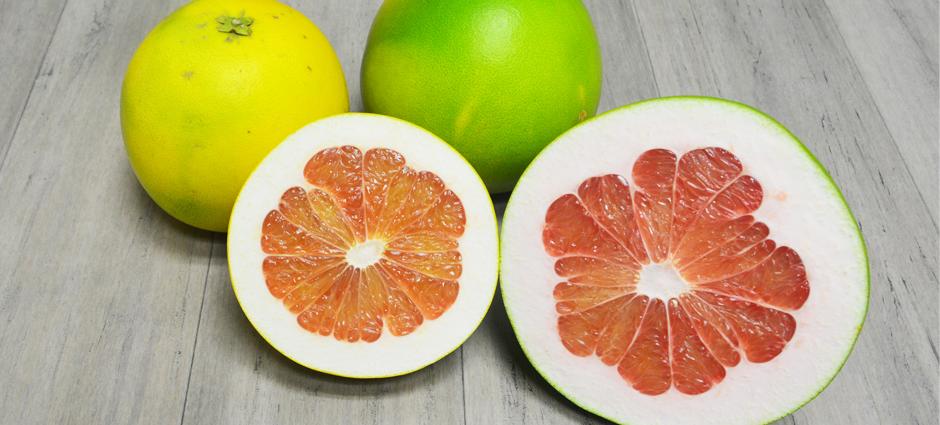Citrus Guide - From Tiny Kumquats to Giant Pomelos
There are many varieties of citrus grown in California. The major crops are: Navel and Valencia oranges, Lisbon and Eureka lemons, Marsh grapefruit, and tangerines, which include tangelos, mandarins, and tangors. Various other citrus crops are grown here as well, such as limes, pomelos, and kumquats. Many lesser-known, but interesting, varieties are grown by small farmers and brought to you fresh at local farmers’ markets. Some specialize in wonderfully different hybrids that you won’t find anywhere else.
Categories of citrus follow with their common varieties, usage, and selection.
Calamansi: The growers call them lemons, but you might also find them referred to as Calamansi limes, Chinese oranges, kalamansi, golden limes, or even Panama oranges. The flavor is something like a sour orange or a slightly sweeter lime, and it has a fragrance to match. Use in marinades, on fish, candied, or made into a refreshing lemonade. Select as you would a lemon (below).
Calamondin: Distinct for its abundant, petite gold fruits (about 1-1/2 inches) and sharp tart juice. It is a hybrid of the mandarin orange and the kumquat, hence the small size. The thin peel is glossy dark green when unripe, turning bright yellow-orange as it ripens. They are used for their juice in marinades, sauces, chutneys, and pickles. The calamondin's acidic properties make it a good tenderizer in pork and beef marinades.
Citron and Fingered Citron (Buddha’s Hand): An extremely fragrant, misshapen fruit that is indigenous to the lower Himalayas. In China, it is a traditional temple offering and symbol of happiness, longevity, and good fortune. The culinary benefits are in the pith and rind; the fingers are all rind, without pulp or juice. Citron is used to make candy. Purchase those that have fresh, shiny, bumpy rinds.
Grapefruit: A large, tart citrus fruit with a mostly yellow rind and often tinged with green or red. Grapefruit is categorized by the color of the pulp: red, pink, or white. The color of the pulp doesn't affect the flavor.
Kumquat: Sweet and juicy on the inside and bitter on the outside, the kumquat is a small oval fruit that can be eaten, rind and all. Good in salads, stir-fry, and other recipes. They can also be canned and preserved. There are also tangy limequats and mandarinquats hybrids.
Lemon: Meyer, Lisbon, and Eureka are the most common varieties. The Meyer has become very popular because it is less tart. Lisbon and Eureka lemons are tart and tangy, so they are great for using rind (zest) and juice in various baking and cooking recipes. It is also used as an astringent and has an anti-inflammatory effect. Lemons are also used for cleaning purposes.
Lime: Small, roundish, seedy, and sour, with pale green flesh; the lime is usually sold with green rinds, although in cooler winter climates, they turn yellow when fully ripe. They are prized for their acidic juice and rich aroma. Varieties include the Bearss, Persian, and Key.
Orange: The most popular of the citrus family, the Valencia and Navel oranges are the most common. Blood oranges have a deep red flesh, and cara cara oranges have a beautiful pinkish orange inside. Eat out of hand, drink juice, or cook with the juices. Oranges are also used in several cleaning agents and perfumes.
Pomelo: (pomellos, pumelos) This is a very large citrus fruit, somewhat like a grapefruit, with a lovely mild flavor. The rind, of a pomelo can run from pale green to yellow, and the pith beneath the rind can be very thick. Common varieties include Chandler, Shaddock, and Tahitian. The segmented flesh may be pale yellow or pink like a grapefruit depending on the variety.
Tangerine: Murcott, Satsuma, Mandarin, and Clementine are the most common varieties. Tangerines are less acidic than oranges, sweet, and mild. Peels come away easily, and segments separate with ease.
Tangelo: Hybrid between a grapefruit and a mandarin orange. A bright orange-red color with a distinctive raised neck. It has a rich, tart flavor. Use and store as you would a tangerine. A common variety is the Minneola.





